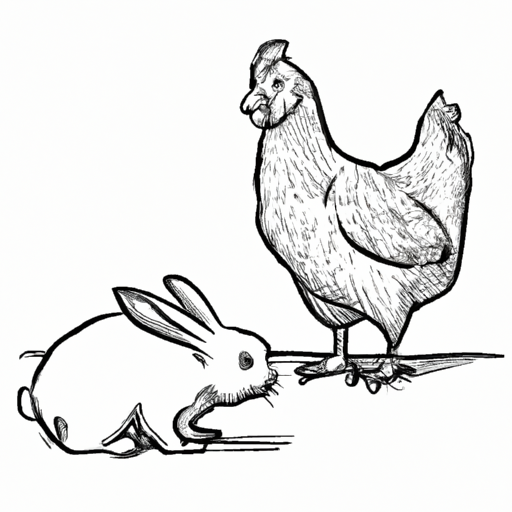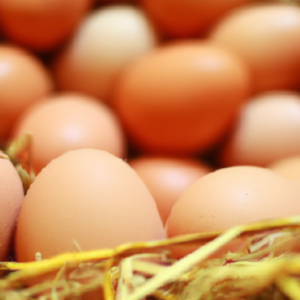
Have you ever wondered if chickens can coexist harmoniously with other small livestock, such as rabbits or goats? The answer might surprise you! In this article, we will explore the possibility of raising chickens alongside these furry friends and delve into the potential benefits and challenges that come with it. So, if you’re curious to find out whether feathered and furry creatures can share the same living space in peace, keep on reading!
Benefits of Raising Chickens Alongside Small Livestock
Raising chickens alongside small livestock such as rabbits or goats can offer a range of benefits. From improved waste management to diverse income streams, this co-habitation strategy can be a win-win for both the farmer and the animals involved.
Improved Waste Management
One of the major advantages of raising chickens alongside small livestock is improved waste management. Chickens are highly efficient in turning food scraps and organic waste into high-quality fertilizer through their manure. When co-habited with rabbits or goats, the chickens can help in breaking down the manure produced by these animals, resulting in a faster decomposition process and nutrient-rich soil amendments for the farm.
Pest Control
Chickens are natural pest controllers. They love to forage and peck at insects, grubs, and other pests that can be harmful to plants or other animals. By raising chickens alongside small livestock, you can harness their pest control abilities to keep pests at bay. This natural pest control method can reduce the reliance on chemical pesticides, making it an eco-friendly approach to maintaining a healthy farming environment.
Diverse Income Streams
Co-habiting chickens with small livestock can also provide diverse income streams. Apart from the sale of eggs and meat from chickens, you can also sell rabbits for their fur or meat, or goats for their milk or meat. This diversification can help to stabilize your farm’s income and make it less reliant on a single source of revenue.
Considerations for Co-habitation
While there are many benefits to raising chickens with small livestock, there are several important considerations to take into account before implementing this co-habitation strategy.
Space Requirements
One of the key considerations is space. Each animal species has specific space requirements, and it is crucial to ensure that there is ample room for both chickens and the small livestock. Consider factors such as adequate grazing or foraging areas, sufficient nesting or shelter spaces, and the overall compatibility of animals in a shared environment.
Compatibility of Species
Not all species coexist harmoniously. It is important to choose animals that are compatible with each other in terms of behavior, diet, and housing needs. For example, chickens and rabbits are generally considered compatible due to their peaceful nature, while chickens and goats may require careful monitoring and separate housing due to potential aggressiveness or dominance issues.
Feeding Considerations
Each species has its own specific dietary requirements. It is important to ensure that the nutritional needs of all animals are being met adequately. While chickens can subsist on a combination of commercial feed and foraged foods, small livestock like rabbits or goats may require specific types of feed or forage. Proper feeding management is essential for the overall health and well-being of all the animals involved.
Building Suitable Housing
Providing suitable housing is crucial for the well-being and safety of both the chickens and the small livestock. Depending on the situation, there are both separate and shared housing options that can be considered.
Separate Housing Options
Separate housing involves providing individual housing structures for each species. This ensures that each animal has the space and environment it needs for optimal living conditions. Separate housing may be necessary when species require different types of shelter, such as a chicken coop versus a rabbit hutch or a goat barn.
Shared Housing Options
In some cases, it may be possible to house chickens and small livestock together. This can save space and promote better social interactions between the animals. However, shared housing should only be considered if the species are compatible and there is ample space and resources available to accommodate all animals comfortably.
Managing Health and Biosecurity
Maintaining the health of both the chickens and small livestock is crucial to their overall well-being. Proper management of health and biosecurity measures can help prevent disease spread and ensure the longevity of your animals.
Preventing Disease Spread
Preventing the spread of diseases is essential when co-habiting chickens with small livestock. It is important to practice good hygiene, such as regular cleaning and disinfection of housing and equipment. Additionally, quarantine procedures should be followed when introducing new animals to prevent the introduction of diseases or parasites.
Routine Health Checks
Regular health checks are vital to detect any potential health issues early on. Establishing a relationship with a veterinarian who is experienced in working with both chickens and small livestock can be beneficial. Routine health checks can help identify and address any health concerns promptly, ensuring the overall well-being of all animals.
Feeding and Nutrition
Proper feeding and nutrition play a key role in the health and productivity of both chickens and small livestock. It is important to provide a balanced diet that meets the nutritional needs of all animals involved.
Balancing Nutritional Needs
Each species has its own unique nutritional requirements. It is important to provide a balanced diet that includes the necessary vitamins, minerals, proteins, and carbohydrates for optimal growth and development. Consult with a veterinarian or livestock nutritionist to ensure that the feed provided meets the specific needs of each animal species.
Common Feed Options
Depending on the availability and cost, there are various feed options for both chickens and small livestock. Commercial feeds specifically formulated for each species are readily available and provide a convenient and balanced option. Additionally, foraging or grazing can supplement the diet of small livestock, while chickens can benefit from kitchen scraps, garden waste, and insects as a natural part of their diet.
Potential Challenges
While co-habiting chickens with small livestock can bring many benefits, there are potential challenges that may arise. Being aware of these challenges and taking appropriate measures can help mitigate any issues that may arise.
Behavioral Issues
Different animal species may exhibit behavioral issues when housed together. Chickens may peck or harass small livestock, and goats or rabbits may display aggressive behavior towards chickens. Monitoring the animals closely and addressing any behavioral issues promptly can help maintain a harmonious living environment.
Resource Competition
Sharing resources such as food, water, and shelter can lead to competition among animals. It is important to provide adequate resources to ensure that all animals have equal access. This may involve providing multiple feeding stations, water sources, and ample space for rest and shelter.
Benefits of Raising Chickens with Rabbits
Specifically looking at the combination of raising chickens with rabbits, there are unique benefits that can be obtained.
Manure as Fertilizer
Raising chickens alongside rabbits allows for efficient use of manure as fertilizer. Chickens produce nitrogen-rich manure, while rabbit manure is high in phosphorus and potassium. Combining the manure from both species creates a well-balanced and nutrient-rich fertilizer that can be used to enhance soil health and promote optimal plant growth.
Pelletized Feed
Rabbit feed is often formed into pellets, which can be fed to chickens as well. These pellets offer a concentrated source of nutrients for the chickens and allow for easy feeding management. This combination of raising chickens with rabbits maximizes resource utilization and streamlines the feeding process.
Benefits of Raising Chickens with Goats
Similarly, there are also unique benefits to considering the combination of raising chickens with goats.
Weed Control
Goats are natural weed eaters and can help control weeds in the pasture or grazing areas. By raising chickens with goats, the chickens can complement this weed control effort by picking on insects or weeds that the goats may not consume. This combined approach can result in a cleaner and more productive grazing area.
Dung as Natural Fertilizer
Goat dung is an excellent natural fertilizer. By co-habiting chickens with goats, the chickens can help break down and distribute the goat dung, promoting faster decomposition and nutrient cycling. This natural fertilization process enriches the soil, leading to improved soil health and enhanced plant growth.
Best Practices for Co-habitation
To ensure the success of co-habiting chickens with small livestock, several best practices should be followed.
Gradual Introductions
Introducing new animals gradually is crucial to allow for the establishment of a social hierarchy and minimize stress. This can involve visual or physical barriers between different species initially and gradually allowing supervised interactions. Gradual introductions promote positive interactions and minimize the risk of aggressive behavior.
Providing Adequate Shelter
Adequate shelter is essential for both chickens and small livestock. Each species should have access to suitable housing that provides protection from the elements and predators. Ensuring that there are enough nesting spaces, perches, and hiding spots for all animals promotes their overall well-being and reduces stress.
Monitoring Interactions
Close monitoring of interactions between chickens and small livestock is important to identify any issues or conflicts early on. Regular observation allows for prompt intervention if any behavioral issues or resource competition arise. Monitoring interactions also helps in identifying any potential health issues, enabling timely veterinary intervention.
Conclusion
Raising chickens alongside small livestock like rabbits or goats has numerous benefits, including improved waste management, pest control, and diverse income streams. However, considerations such as space requirements, compatibility of species, and feeding considerations should be taken into account. Suitable housing, proper health management, and providing adequate nutrition are vital for the well-being of all animals involved. While there may be challenges in co-habitation, implementing best practices and being proactive can help overcome these hurdles. Whether it is the combination of chickens with rabbits or goats, this co-habitation strategy can enhance the overall sustainability and efficiency of small-scale farming operations.







